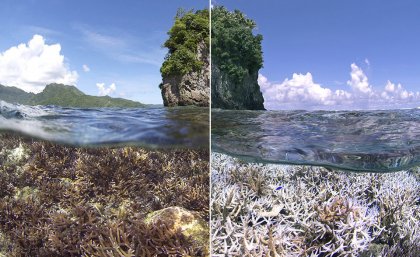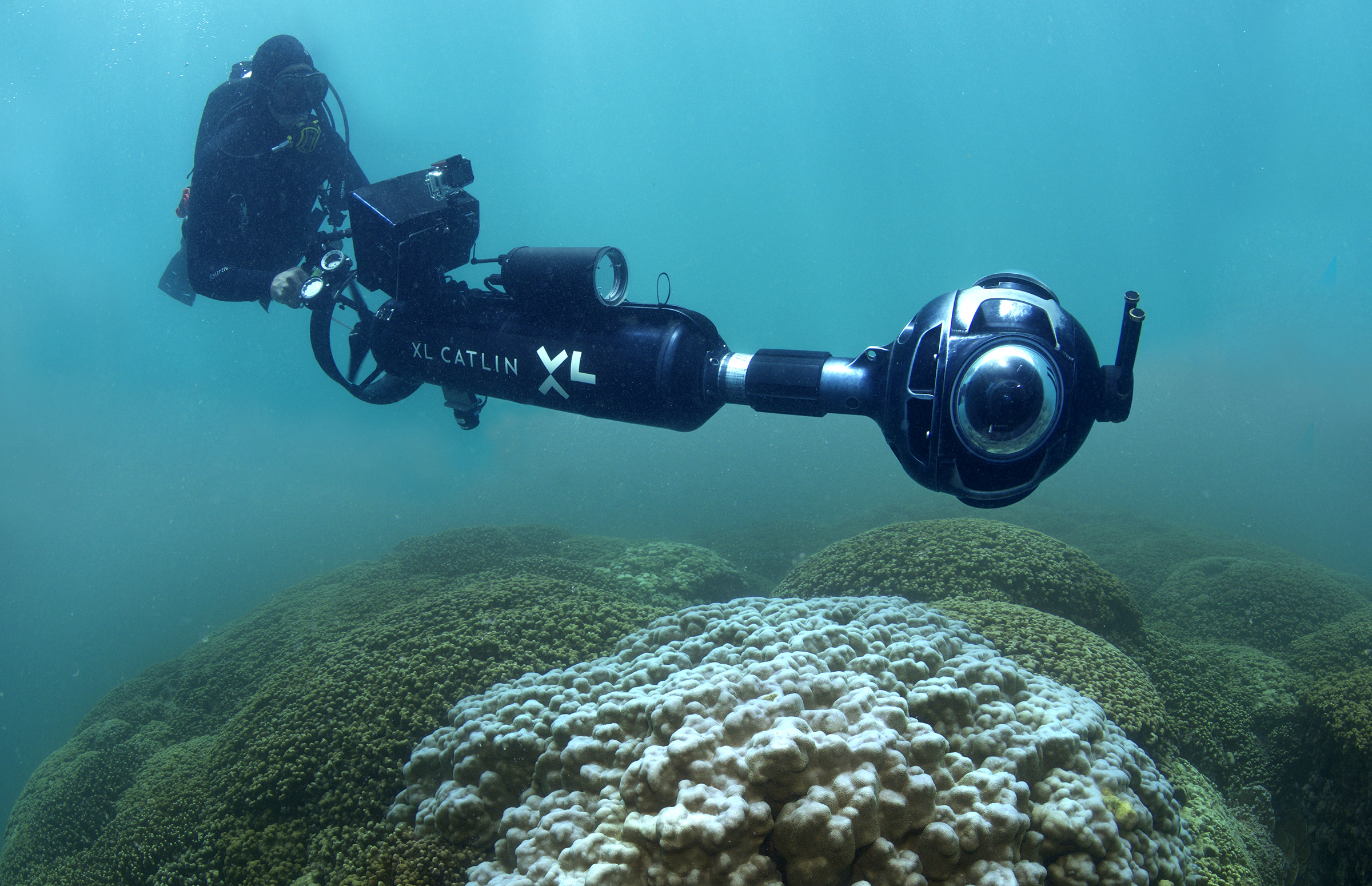
A global coral bleaching event expected to heavily impact the Great Barrier Reef has been confirmed by scientists from The University of Queensland and the National Ocean Atmospheric Administration.
UQ Global Change Institute Director and Chief Scientist for the XL Catlin Seaview Survey, Professor Ove Hoegh-Guldberg said it was too soon to predict the full extent of damage on the Great Barrier Reef, as this was only the third recorded global coral bleaching event in history.
The bleaching event, expected to hit the GBR in early 2016, is being driven by the warming effects of El Niño on land and ocean temperatures, which combine with the impacts of climate change.
“If conditions continue to worsen, the Great Barrier Reef is set to suffer from widespread coral bleaching and subsequent mortality, the most common effect of rising sea temperatures,” Professor Hoegh-Guldberg said.
“In the first major global event in 1998, more than half the Great Barrier Reef experienced bleaching with about 5 to 10 per cent of the corals dying.”
He said while the first signs of coral bleaching on the reef occurred from 1980 onwards, 1998 was the first truly global event – affecting half of coral reefs in the GBR alone.
By the end of 1998, an estimated 16 per cent of corals had been eliminated worldwide.

Dr Manuel Gonzalez-Rivero recording bleaching in Hawaii in August 2015 using the SVII camera. Credit: XL Catlin Seaview Survey.
2010 was even hotter than 1998 and saw record bleaching in many regions including the Northern Territory and Western Australia.
“Thankfully the Great Barrier Reef was spared during this second global event due to storm activity which alleviated the heat stress. The reef may not be so lucky in 2016,” Professor Hoegh-Guldberg said.
“In 1999 my research predicted mass coral bleaching events to become successively worse over time if we failed to deal with rising atmospheric gases. Unfortunately, 16 years later, these predictions are beginning to unfold.”
UQ scientists recorded this global bleaching event in Hawaii in August as part of their work with the XL Catlin Seaview Survey, capturing high-resolution 360-degree images of affected corals.
“The timing of that expedition couldn’t have been better as it has provided our team with the important baseline information in what is expected to be one of the worst affected areas for this event,” Professor Hoegh-Guldberg said.
Australia faces these challenges less than two months out from COP21 in Paris, where world leaders will come together to negotiate a universal climate agreement to keep global warming temperatures below 2°C.
“The meeting in Paris represents crunch time for the world’s coral reefs” Professor Hoegh-Guldberg said.
“We either cut emissions deeply or risk losing coral reefs future generations.”
Media: Rachael Hazell, r.hazell@uq.edu.au, +61 (07) 3443 3150 or +61 415 814 529
.jpg)










